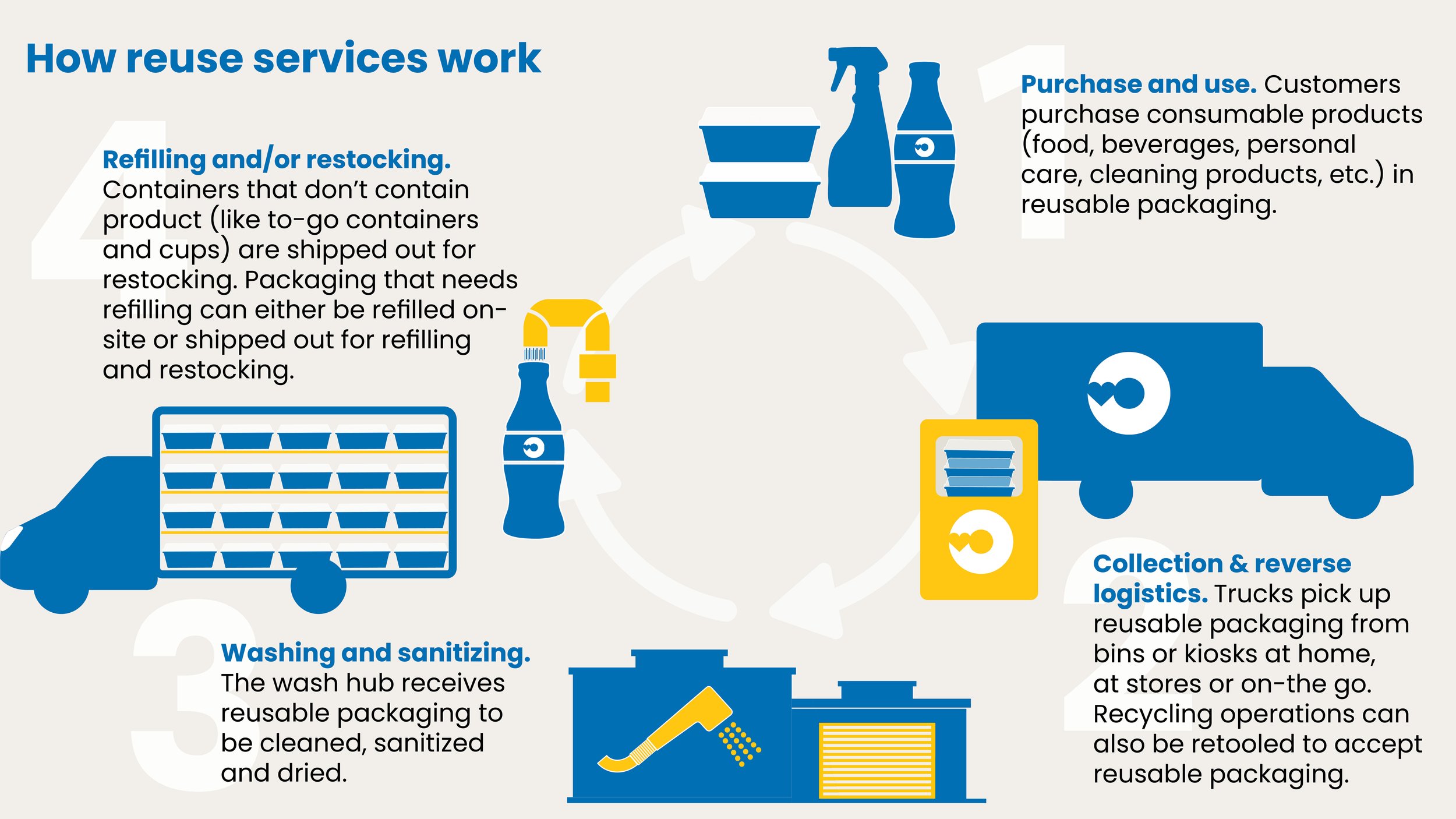EPR: it’s not just for recycling anymore
How Extended Producer Responsibility can finance reuse, grow jobs, and help solve climate change at the same time
“The effect has been increased recycling where EPR systems are in place, but no actual reduction in the generation of packaging waste.”
Even though Extended Producer Responsibility (or EPR) has in theory been about creating a circular economy for packaging – and in many cases, explicitly talks about packaging reduction – in practice, the only goals that have been applied in legislation are recycling targets. (As a refresher: EPR is a policy tool that holds consumer brands responsible for the environmental impacts of their packaging.)
The effect has been increased recycling where EPR systems are in place, but no actual reduction in the generation of packaging waste. Unfortunately, this trend continues across the board - pretty much anywhere you look in the world.
Making EPR Matter
This topic is personal for me. I’ve been working on EPR for packaging for 20 years. I helped draft model legislation that’s been introduced around the United States. And for years, Upstream held up the British Columbia EPR model as something that should be replicated here in the US. We’ve now got more than a decade of data from BC’s EPR law, and it’s true that diversion from landfill rates went up from 42% to 59%, but:
Overall waste generation is up 37% over that same period, and
Per capita waste generation is up 23%.
Essentially, EPR hasn’t put a dent in the things that actually matter. Recycling in and of itself does not matter. What matters is:
Reducing the extraction of natural resources - trees, minerals, oil, gas, etc. currently used for packaging,
Reducing the amount of energy needed to create and transport consumable products, and
Reducing the amount of waste and pollution associated with consumable products.
If packaging generation continues to rise, then more recycling will not accomplish any of the things that matter in the real world, which need to be about reducing the stress on the planet caused by human consumption.
“Take, Make, Waste”
Single-use packaging systems – an artifact of the post World War II economy – are designed around unnecessary overconsumption. Prior to the war, reusable packaging was the norm across the board. During the war, the extraction, mining and manufacturing industries ramped up production levels to serve the war effort. Business was good – but once the war was over, they asked, “What should we do now?”
“15% of wood harvested, 22% of aluminum mined, 40% of plastic created, and 50% of glass produced goes primarily to make single-use packaging for consumable products.”
Their answer: Keep churning all these materials – aluminum, paper, and eventually, plastic – through the economy. One of the big ideas was to sell them in the form of disposable products.
The packaging is used once and then either trashed, recycled or littered. This system is built around the concept of packaging as a product. It requires extensive global supply chains (for production and recycling) and justifies the unnecessary extraction of precious natural resources on the front end, while creating significant amounts of waste and pollution impacts on the back end.
Who benefits from this way of consuming? It’s not consumers; it’s not even the consumer brands or the retailers who sell their products. It’s the extraction companies on the front end, and the waste management companies on the back end: take, make, waste. And more recycling – while important –doesn’t really do anything to disrupt this system of unnecessary overconsumption.
EPR and the New Reuse Economy
But the good news is that the New Reuse Economy does. In the New Reuse Economy, consumable products come in reusable packaging, and reuse infrastructure – for collection, reverse logistics, washing/sanitizing, and refilling/restocking – serves consumers in local and regional supply chains. This system is built around the concept of packaging as a service and not a product. It’s the foundation for a circular economy that stewards the resources we take from the planet by creating a package once and reusing that package in closed, regional loops for as long as possible – minimizing natural resource extraction, preventing waste and pollution, and creating local economic opportunities and jobs.
EPR can and should be about creating a circular economy for packaging - that prioritizes source reduction and reuse above recycling. In order to do that, new EPR legislation should include provisions that prioritize building out reuse systems and infrastructure. This week, we’re releasing three fact sheets about how EPR can:
Help transform massive global supply chains for single-use packaging into resilient local and regional supply chains that create jobs,
Help reduce climate emissions from packaging through financing new reusable packaging infrastructure, and
Help businesses save money from no longer needing to procure all the single-use products.
In all of these discussions, the goal shouldn’t be just passing EPR legislation or increasing recycling. It really should be about creating a circular economy for packaging, that reduces unnecessary overconsumption and helps restore the planet.
When policymakers, businesses and NGOs can get aligned around circularity as the goal, then the sky’s the limit for what we can accomplish.



